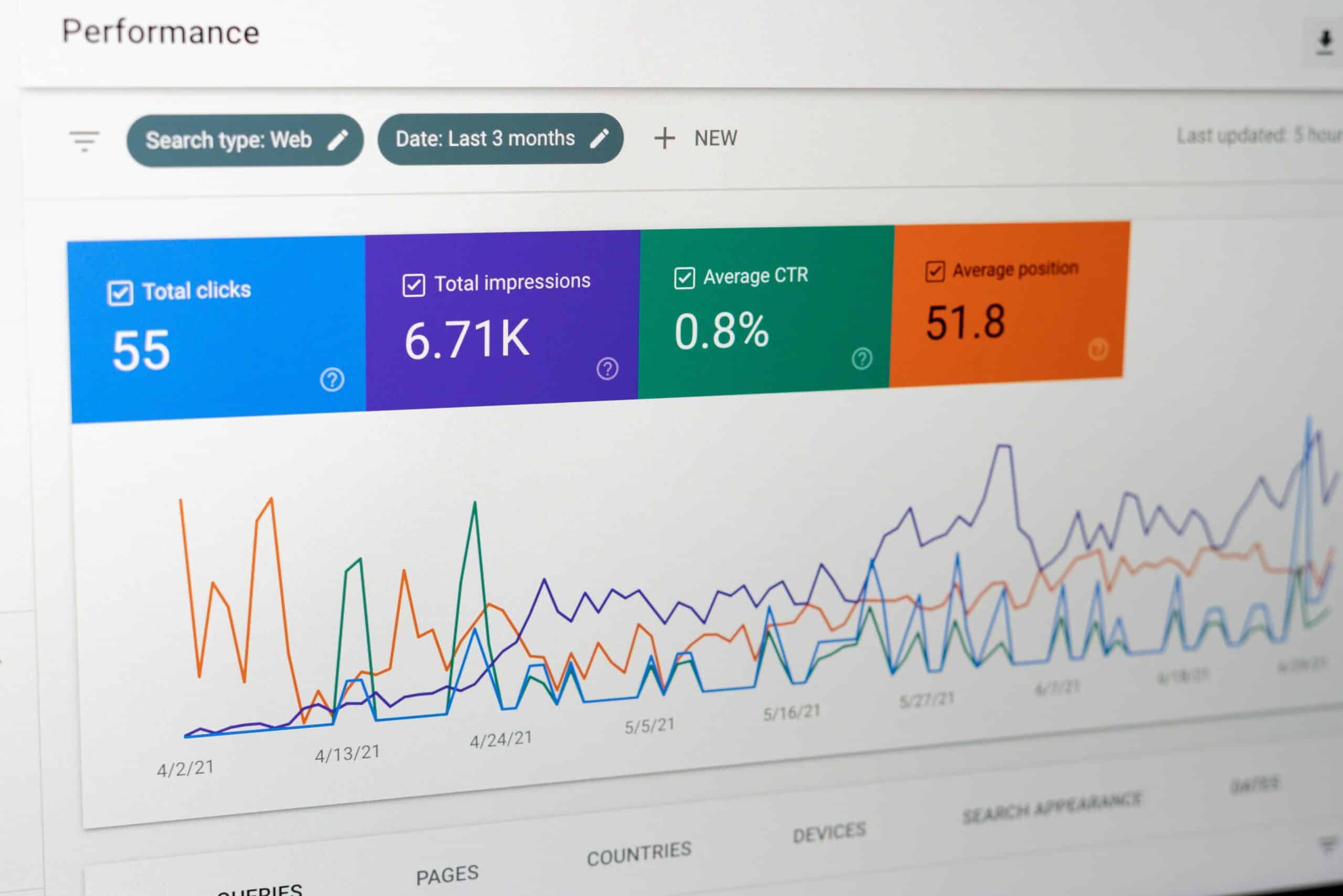This is how the question many SEOs are afraid to answer starts. In an industry with little to no experimentation and testing – too costly, it will take too many resources, our devs say is easier to implement site-wide… – and dubious QA methodologies, answering confidently will likely tie you up to unrealistic expectations. But, of course, we are still making claims.
Over the last few weeks, I have noticed a considerable amount of people, mainly from the SaaS industry, claiming two very different things: on one hand, that SEOs generally claim it takes 6-12 months for search engine optimisation to make an impact; on the other, that this is a blatant lie used to buy time from stakeholders and that good SEO should ALWAYS have instant impact.
On the first claim, it really looks like the 3-6-month period I have heard so many times about have increased over the last few years. Some quick googling reveals a good range of blog posts, from very popular tool providers to respected agencies, saying various things. For some of them is a 4-12 months, for others is 3-6; some opt for some middle ground between 4 and 9, and some others say SEO truly does not make an impact until hitting the 12-24 months mark. SEO efforts seem to take a very long time since implementation, with barely any mention of instant impact.
The second claim confidently states that SEO should be instant and that anything taking longer than that is, well, sort of a scam. This is usually accompanied by vague charts, sometimes zigzagging across key dates in Google Core Update calendar, with absolutely no context about what was done or what industry. I won’t go into the craziest of claims: that the instant impact happens from the time you actually hire a SEO consultant or agency, mysteriously going through multiple sign-off, localising issues, redacting fixes, and opening tickets, and somehow doing all of your QA and releasing the sprint on that very same day.
Reception to these posts and claims is varied. Some agree, some disagree. Some people have tried to be a bit more nuanced, and explain that it just depends -yes, it depends – on many factors. Some people claim that instant impact only happens when content marketing efforts are mixed in with SEO, some others say this is about zero volume keywords, a few just assure they also get instant impact for their clients and share some more meaningless charts, and there are even those complaining about these results only being achievable by leveraging content. So, what is it? How long does SEO take to make an impact after implementation?
Over a long career in SEO working with dozens of websites across multiple niches and markets, I can only say I have seen a full range of timelines until positive impact was affected. From instant impact to long queues of sprints until traffic started to take off. SEO changes can be instant, including those more oriented towards the technical side of things. Some of them might take one month. Some of them might take 3 months… plus there are very obvious caveats to prove full causation of a single implementation against any of the usual metrics trending up. What follows is a recent, honest, and transparent look at when things I have been closely involved in the last 2 years have actually shown impact with clear causation on some of our clients. This is not to claim we are the best SEOs in the world – in my case, I’m just average, although I have some fantastic teammates – but to hopefully provide you with some useful, transparent, and honest information that will give a more nuanced, detailed answer to how long does it take for SEO to make an impact. Let’s get on with it.
When SEO has instant impact:
1. Making meaningful changes to information architecture
I will start with an easy one that showed clear impact and had nothing to do with content, although new pages were created. This was a domain receiving around 2m organic visitors monthly, on a very competitive and profitable niche, spanning almost a million pages of location pages, product facets, and many other page types SEOs love to deal with on a daily basis. Their top PLPs were suffering from cannibalisation issues, and this was believed to be related to information architecture, with confusing URL structure and internal linking giving closely similar child pages more weight than they should have had. We tested several things that yielded marginal results – yes, that happens and it’s fine – until we created a limited amount of hub pages with barely any copy that changed hierarchies and how the parent PLP page was placed in it. It was only released on a subset of pages after the implementation was greenlighted by QA, producing immediate impact to our test group, with control groups remaining within expected levels:
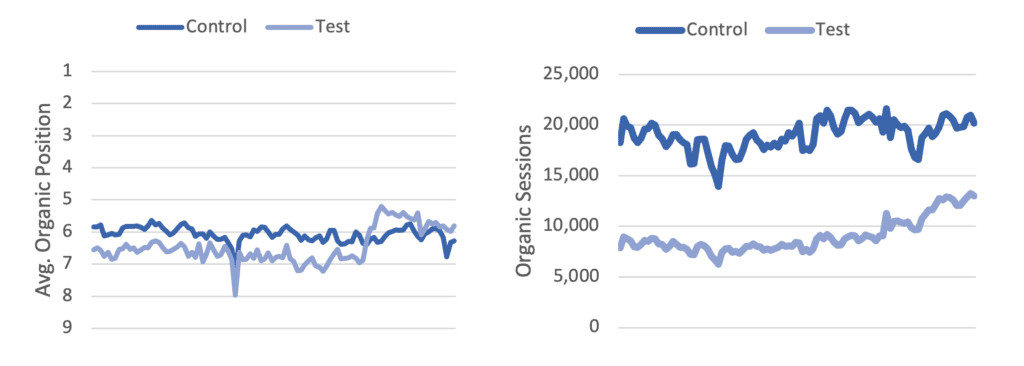
Above we can see how impact showed just one day after implementation, with traffic growing from 9,000 daily organic sessions to 11,000 in barely one day. Causal impact test was clearly and brightly positive. At 3 weeks-time, traffic had increased by 35% for the test group as opposed to 5% for the control group. Many sign-off and discussions later, the project was scaled up, showing even better results when implemented site-wide, finally amounting to 500,000 extra organic sessions or a 25% increase overall for the website, with a 70% traffic increase on target pages. But some things can go wrong.
2. Reverting recent negative impact caused by internal changes.
When talking about impact, I almost always assume people are talking about positive impact, but there are changes and implementations – many times not discussed or revealed to SEO teams after the fact – that can definitely negatively impact your website and you’ll get those dreaded results almost instantly. Not everything in the implementation above was all joys and laughs, and while the site was receiving the benefits of our SEO efforts something went terribly wrong:
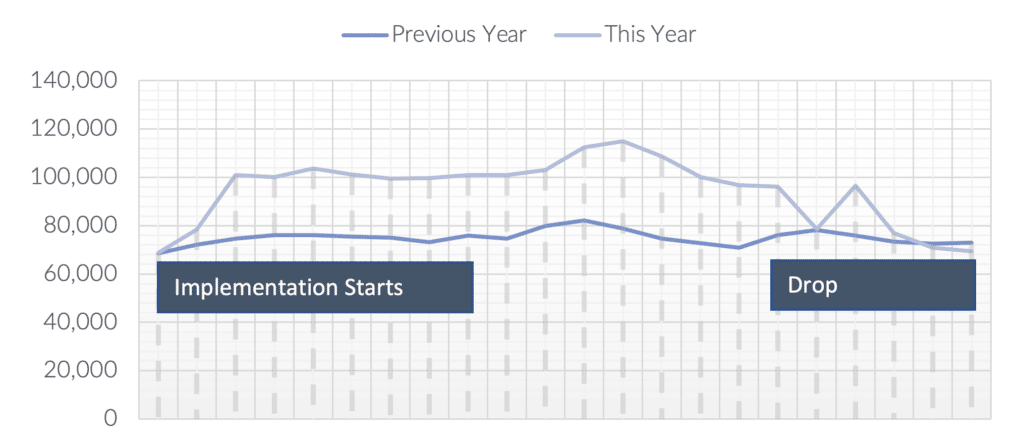
There were no sprints scheduled during this time and apparently no changes made to the website, but activity and particularly crawl stats were far from what we usually see. Further investigation through log files and daily crawls revealed the website started spamming and duplicating certain page groups, adding hundreds of thousands of new duplicates, self-canonicalized pages to the domain. This was due to a wild, untracked, unnotified change applied by a developer no one was aware off. And during the weekend
A few fixes later and in the space of two or three weeks of back-and-forth with the different teams involved, traffic was back to previous levels and the upward trend continued, so both a case of instant negative impact – a critical change in your website not tracked through sprints – and a case of instant positive impact – a SEO team timely reacting to localise and fix a sudden internal event that has undoubtedly impacted organic traffic. For those that are wondering why you need an SEO team on retainer, this should justify it. This is not an isolated case and teams will make errors that will impact your SEO efforts. To make it worse, the longer it takes to localise them and fix them, the more traffic you will lose; not just that, but the time for recovery might also become longer and other issues might (will) happen in the meantime. Always remember to keep a close eye on things and that reactive SEO is sometimes very necessary.
3. Improving old content and creating new content
Back to proactive changes that were actually fully planned. In this recent social media polemic, some SEOs have been claiming that one of the ways to instantly impact your website is to leverage content. Creating new content and optimising existing pages can be a sure way to lift up your traffic fast, but this is not always instant – remember we are talking about time to make impact since the changes are fully live – but can take some more time depending on several factors ranging from information architecture to overall topical coverage and authority. For example, we have had instant success when we have cleaned up, tidied up and expanded existing topical hubs within domains that already had quite some authority for relevant and related topics, almost doubling traffic in less than 48 hours:
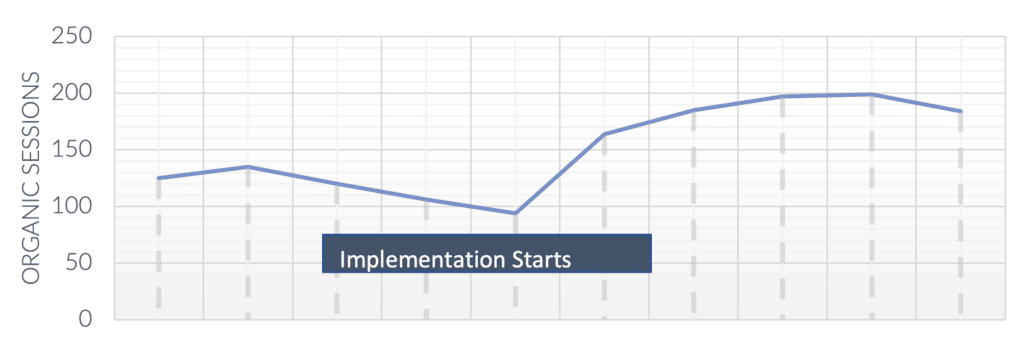
The impact was quick and did not require a lot of effort, just a few new pages in the structure and optimising some old ones, while several batches of new content were getting ready to go live. As you can see content optimisation combined with internal linking changes tends to work great and have a quick impact, and this not an isolated example:
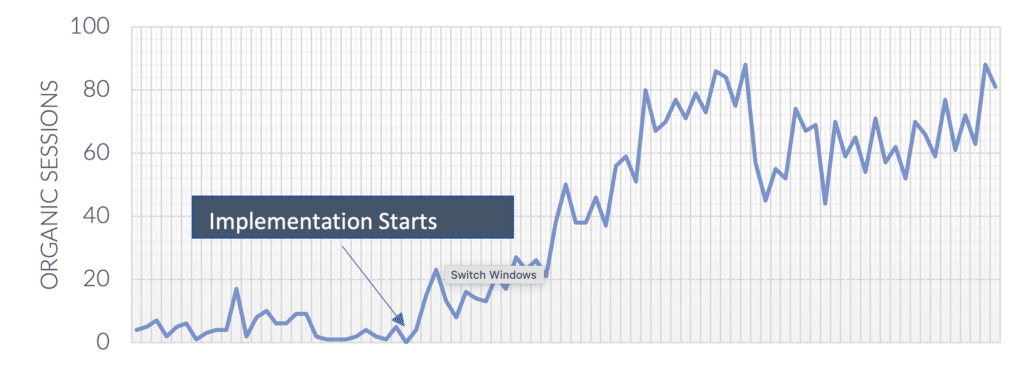
The above shows how properly optimising a single piece of content can yield results pretty much immediately. However, and looking further at the graph, we can also see the article did not reach peak performance after 5 to 6 weeks from changes going live. So, instant impact, but the real benefits can take a while to happen.
4. Obvious things
And I’m not going to give you any examples because I would struggle to find any recent work in the last 2 years that was as lucky as this. Sometimes you might find a site that is failing to render key resources or have inadvertently blocked search engine bots from key areas or resources on their website or might have used the noindex tag in the wildest fashion, etc. You know, usual best-practice stuff that anyone with a few months of good SEO guidance can localise and fix, no need to get more comprehensive with the thousand blog posts about SEO checklists already spamming the internet with their helpfulness. This sort of issues is not that uncommon in more immature sites, usually start-ups or stablished businesses that have failed their digital transformation process, sometimes with good tech or market knowledge but not a single care about SEO. Many of this might be SaaS. So, if you are this lucky, good for you. Let us know when things get really hard.
When SEO takes a while to take off
1. Improving old content and creating new content
Yes, new, and optimised content can have instant impact, but they can also take a while to gain traction and even the impact you see in the first few days after release might just be a tiny example of what that content is set to achieve. On our first content example, we saw how the section clearly almost double organic visits in 24 – 48 hours. Let’s take a look at what happened during the next 365 days:

It exploded. After some promising numbers during the first few weeks, the project reached peak performance after 4 months. From almost doubling traffic to a 400% increase YoY starting on the 4th month since going live. So, even when you have instant impact, that trend might ideally still go up and the actual real impact wouldn’t be clear until at least 6 weeks have passed, but larger, more complex projects can take more time.
2. Off-Page
If there is someone who can show me a good correlation chart between links and instant traffic changes, I’m all ears and more than willing to learn. For now, however, I will say the impact of links can never be proven in isolation and that positive impact into rankings and traffic tend to take quite a while, particularly if you are looking for sustainability and working on EN language search engines – Google can be terribly bad at localising spam for non-English languages.
To make things a bit more complicated, over the last few years it has become more and more common to see sites with ‘good’ content surpass stablished sites with slightly inferior content and a way more authoritative backlink profiles, so while still a key factor, it might not be a simple numbers game for most queries. So, if we all agree external links should and can have a definite impact in your website – duh –, how long do we need to wait till we see changes? It depends.
This domain waited around 6 months to actually see traffic impacted but showed increased keyword coverage and improved rankings on many relevant queries during the first month, just not enough to actually reach page 1 and register a more significant number of impressions. Tech and infrastructural improvements saw the domain and this particular section recover from the downward trend quickly, but link building took much more time to have an actual impact:

The above is for one specific section where most of the link building and DPR focus was, with no direct off-page improvements in other areas of the website. When we started link building, we could see number of keywords and other metrics from third-party tools increasing, but with no impact at all to actual organic clicks or impressions. In 2 – 3 months the impact started to be clearer, and we could see some positive changes. After 6 months, traffic started considerably trending up and only in this section of the website, achieving numbers never seen before and confirming not just recovery, but significant growth. The final result was a 300% increase in the section a year after we started working with the domain, with peak numbers being reached just after 9 months. Was it a long time? Perhaps. Could have it gone faster? Maybe, but not much. This was a highly competitive niche with stacked competitors with much more mature and long-running DPR strategies, time was essential to get us to the level we wanted and needed to get to.
3. Some technical SEO implementations
So far, almost every implementation balanced towards tech SEO we have seen in this article had instant impact or at least took less than a month to show some positive impact to organic traffic. Most of these where run into isolated sprints, tested and we had very hard proof of causation. However, those are usually rate cases and most of the time things run in cluttered sprints, external and internal noise is much better, plus domains and the changes they require might be numerous and affecting areas that can take a while to be fully assessed by search engines.
In this example, the domain was a small niche news site with severe problems to get their highly useful, unique content crawled, indexed, and ranked properly. The first 3 months were mostly dedicated to technical changes, focused on improving crawlability and indexability by improving search engine accessibility and mitigating any rendering issues, plus adjusting an ineffective use of paywalled content for SEO. No impact at all, except for log files showing improvements in expected areas. By the end of the 4th month and beginning of the 5th we started seeing impact to traffic, with much more topical, timely content being indexed and producing traffic and category pages and other static pages ranking more steadily and trending up. From month 8th, traffic had increased by 500%, with no other changes implemented except continuous improvements to crawlability, indexability and IA. After 12 months, the website is already reaching 2,000 to 5,000 organic sessions daily, with nice timely peaks at key dates as expected from just an average of 70 daily organic sessions:
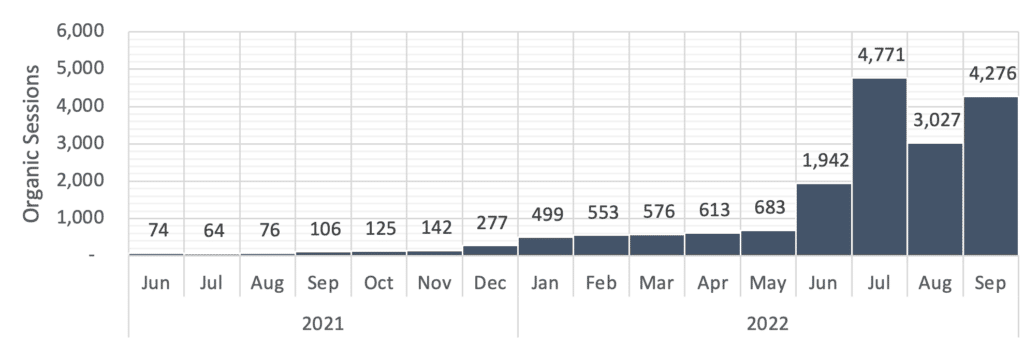
So how long did it take to reach this peak organic traffic levels? Around 14 months since we started releasing changes on the site, with the first positive impact to organic traffic seen during the 4th month after changes started being implemented. Sometimes, it just takes that long, so please remember to be patient and kind.
Everyone is right, everyone is wrong
As you can see, everyone is right and everyone is wrong. Huge claims about making an impact from day 1 and increasing traffic and sales by XXX% in less than 24 hours since the contract was signed is just another tactic to bash common sayings in the industry and try to position yourself as unique and the greatest SEO of all time. There are many versions of this: tech SEOs against SEOs specialised in content, those that criticise the common ‘it depends’ in the industry as if they were an infallible SEO oracle, consultants and agency owners positioning themselves against other agencies and consultants because they don’t do audits with 500 slides of stream-of-consciousness fluff, and many other social media entities who feel the need to increase their value by claiming nonsense and disrespecting so many people in the industry.
At the end of the day, it is just marketing, but it would be fantastic if we could be more ethical and transparent. Surely, we would all be better for it, not just at our jobs and for our clients, but also as kinder human beings fully aware of the confidence issues and the many cases of impostor syndrome existing among our peers, myself included. That’s all from me this time, looking forward to other impostors sharing their failures, successes and how long did it take to get there. Thanks for reading and don’t forget to share!

